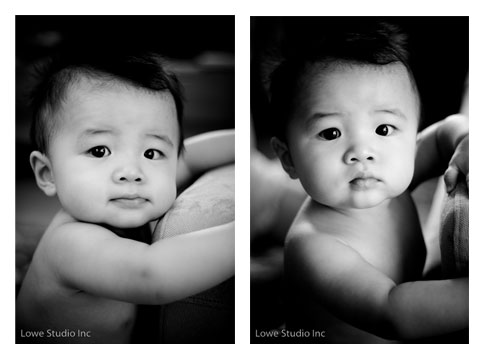
I’m trying to learn how to use my flash better in my photography. I can’t seem to make it work the way I want it to. Here’s some of my results using my favorite model test subject.
The photo on the left is with flash, the one on the right is without it. Personally I like the look of the one without flash as it retains more shadow and depth. ARRRGH. I need to learn how to control my lighting better.

 LoweStudio Inc was founded by me, Raphael Lowe, a Honolulu based illustrator and web designer. I presently design and manage a few dozen commercial websites, but my main focus these days is acting as the head developer for Kapiolani Community College and teaching
LoweStudio Inc was founded by me, Raphael Lowe, a Honolulu based illustrator and web designer. I presently design and manage a few dozen commercial websites, but my main focus these days is acting as the head developer for Kapiolani Community College and teaching
i think my favorite photos are often the ones i took without a flash. the photo you took without the flash is nicer, except the bright area is a bit overexposed. this can be fixed. the photo *with* the flash is less dramatic.
someone once mentioned to me that a camera flash changes a photo into an unrealistic image; you’re not capturing what you’re seeing, you’re changing the way the entire scene looks for a split second, including colors, textures, and perception of dimension.
when you think about it, pro photographers normally skip the flash and change the exposure times instead. when the photo shoot is staged on a set, they generally use fill lights in place of flashes.
Thanks for the comment Phil. I may submit this to the class this week to get critiqued so I may hear similar results. I guess in part I’m trying to prove a point that I’m having difficulty using my flash.
The flash in this left-hand shot was actually bounced off the roof, but it still flattened out his features.
The non-flash result on the right has some hot areas but I did some of that intentionally because I love that high-contrast black and white look.
Hey Raphael,
The real secret to flash is to make it look natural without making yourself crazy. When we did the exercise in class, we discussed available light and how to control it. In the case of the two images above, you have beautiful available light, by adding the flash directly from the camera angle you have “filled in” the shadow areas which is ok if done in a subtle manner. In this case the flash was nearly as strong as the key light ( your available light) causing an overall “homogenization” of the image from a lighting perspective. The flash is meant to enhance the available light in this situation and it was simply too strong. Personally I have to follow a comment made by one of my favorite contemporary photographers. “I love to shoot available light, unfortunately, sometimes the only available light is my flash ” Joe Bussink his website and indeed his clients agree with his philosophy of working available light as much as possible. He is a very high priced, Hollywood photographer, shooting celebrity weddings for some of the highest profile people in the industry. His website is listed here http://www.joebuissink.com/. Long and short, you have hit the nail on the head, you want to control your flash, look at the light before you flash, work with the available first, follow it’s direction and use your flash as a tool to add light where it is needed in the amount it is needed. Get off of the TTL setting and work with the manual setting to reduce the power of the flash so that it matches your scene. Feather it, diffuse it, color it, what ever is necessary to allow the flash to make the shot better. Finally I am going to send you to another source, go to google and type in “the strobist” This guys has a complete on and off camera flash blog set up to help you gain some better ideas of what you might want to do to “get control” of your lighting. See you in class.
Ah, yes I had heard of Strobist before. I’ll go give it a more thorough look again. Thanks Jerry